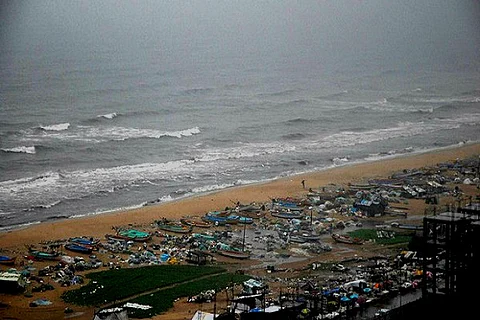

On February 19, the Government of Tamil Nadu released a draft coastal zone management plan to protect the coast and coastal lives along the 13 coastal districts of the state. However, the plan, which is to be modelled on the guidelines in the Coastal Zone Notification (2011) has come under fire for failing on many counts.
What is the draft coastal zone management plan?
According to the Ministry of Environment and Forests, the plan aims to “ensure livelihood security to the fisher communities and other local communities, living in the coastal areas, to conserve and protect coastal stretches, its unique environment and its marine area and to promote development through sustainable manner based on scientific principles taking into account the dangers of natural hazards in the coastal areas, sea level rise due to global warming.”
What are its shortcomings?
However, environmental activists have slammed the plan for various reasons, not the least of which is that it is not, in fact, a plan.
Speaking to TNM, one city based environmental lawyer says, “First let’s understand that it is not a plan. It is only a map. The coastal management plan has to be a holistic document, not a map. Not preparing this as a plan is not only a violation of the guidelines, but also of two court orders from 2014 that set aside previous such maps. This is contempt of court.”
While the plan consists of maps to the scale of 1: 25,000, the guidelines specifically state that ‘local level coastal zone management maps shall be prepared for use of officials of local bodies for determination of the CRZ.’ These small scaled maps would take into consideration the local fragility of the ecosystem in the area, unlike the larger map which is more focussed on the topography of the coastal area.
According to Pooja Kumar of the Coastal Resource Centre, the absence of these maps spells danger. “A local level map at 1: 4000 scale is important for local authorities to determine whether or not a project is sustainable in that local coastal area. Our coast and its features and all its uses cannot be depicted in one large, zoomed out map. Local level planning cannot take place without detailed maps.”
The guidelines also mandate that a hazard line that clearly demarcates land use plan of the area is provided. A hazard line helps clarify the areas where developmental activities will not be allowed to take place.
Environmental activist Nityanand Jayaraman writes, “The documents uploaded in the Environment Department's website do not present any of this information. The Hazard Line which is to be marked taking into account tides, waves, sea level rise and shoreline changes is absent, opening up tens of thousands of acres of low-lying coastal wetlands for development as real estate. The point of the hazard line is to protect communities from seaborne hazards. Presenting a "plan" without a hazard line totally misses the point and puts communities and property in harm's way.
Whom does this affect?
Not having a robust plan that lives up to its mandate affects both coastal communities as well as those living in the inner cities and towns.
The guidelines say, “States shall prepare detailed plans for long term housing needs of coastal fisher communities in view of expansion and other needs, provisions of basic services including sanitation, safety, and disaster preparedness.”
The draft released by the Tamil Nadu government has no provision to this effect.
“When a plan is made without a long-term housing plan, the fisherfolk are stuck between rising seas and growing industries. When large scale development takes place in coastal areas, the fisherfolk in the area will be displaced en masse so where do they go to live without a long-term plan?” slams Pooja.
For those who don’t live along the coast, this is equally dangerous. Says Pooja, “Most of our drinking water aquifers in the city are in areas that are already prone to salinisation because of flattening of sand dunes and non-maintenance of coastal areas. The Chennai Metro Water Corporation takes about 90 million litres of water from the Kosasthalayar river basin on a daily basis. Unchecked development means 90 million litres of water from just one aquifer is gone.”
What can you do?
The draft plan is accepting written comments and suggestion from the public in English or Tamil till April 6, 2018 at the Department of Environment, Panagal Maligai, Saidapet, Chennai 600 015.
According to the guidelines, public hearings on the draft are to be held at the district level, based on which the plan would be revised. The final approved map will be put up on the MOEF website and hard copies made available in the local panchayat office, district collector office.